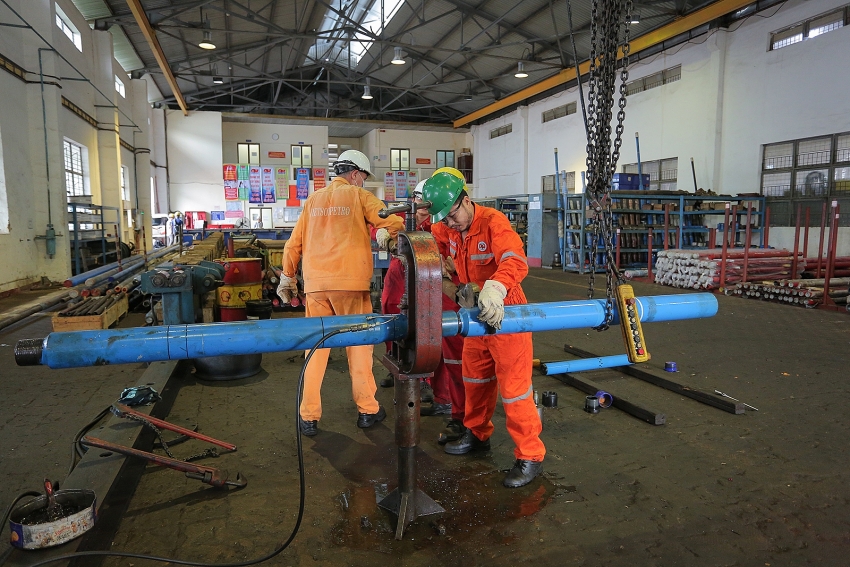PetroVietnam reports slight increase of revenue in first half of 2020
With the highest determination to reach its annual targets, PetroVietnam has been mobilising all of its resources to implement effective solutions to the double crisis and ensure business stability.
 |
| Workers at Vietsovpetro at work |
As a special point of pride, PetroVietnam has gotten through the first half without a case of workplace accidents or COVID-19 infection. Subsidiaries and affiliates such as VSP, Rusvietpetro, Bien Dong POC, PVGas, PVFCCo, PVCFC, and many others have also successfully achieved their targets.
In the period, PetroVietnam and its affiliates and subsidiaries have ensured stable investment flows, making a significant contribution to the growth of business activities.
Specifically, PetroVietnam achieved a total output of 10.73 million tonnes of oil and gas in the first half of this year, exceeding the six-month plan by 4.2 per cent and ticking off 52.7 per cent of the year’s plan.
It has generated 10.90 billion kWh, accounting for 98.7 and 50.5 per cent of the first-half and the 2020 plans, respectively.
In addition it has produced 962,400 tonnes of fertiliser (13.5 per cent higher than the target) and produced more than 6.40 million tonnes of petroleum, achieveing 96.3 per cent of the half-year target and 54.2 per cent of the annual plan.
In the first half of the year, PVN has reported a total revenue of VND283.5 trillion ($12.33 billion), contributing an estimated VND32 trillion ($1.4 billion) to the state budget.
PVN has also marked a milestone in its management activities by officially issuing an e-book on corporate governance on July 1, 2020. This is a significant milestone in strengthening the group’s governance and management capabilities, creating favourable conditions for the group itself and subsidiaries to implement activities with the highest standards, ensure timelines, and improve overall the quality and efficiency.
According to Le Manh Hung, CEO of PetroVietnam, to achieve the targets in the second half, PetroVietnam and its subsidiaries must closely follow the changes in oil and gas demand and supply, push up administration and investment processes, as well as improve the application of technological solutions to cut costs and increase efficiency.
What the stars mean:
★ Poor ★ ★ Promising ★★★ Good ★★★★ Very good ★★★★★ Exceptional
Related Contents
Latest News
More News
- First members of Danang International Finance Centre revealed (December 22, 2025 | 17:39)
- Human-centred governance seen as key to AI development (December 19, 2025 | 18:19)
- Top 10 notable events of Vietnam’s industry and trade sector in 2025 (December 19, 2025 | 14:00)
- Tungsten surges to 12-year high as world enters a new 'black gold' race (December 18, 2025 | 17:27)
- Vietnam’s coffee exports set new record despite price pressures (December 18, 2025 | 17:13)
- Garment and textile sector seeks new growth after volatile year (December 18, 2025 | 17:01)
- VinSpeed and Siemens strengthen cooperation for high-speed rail development (December 18, 2025 | 16:53)
- High-tech adoption for TH true MILK (December 18, 2025 | 13:39)
- Takeda supports health resilience amid climate change challenges (December 18, 2025 | 12:39)
- Mondelez Kinh Do - a chapter of purpose-led leadership in Vietnam (December 18, 2025 | 09:44)

 Tag:
Tag:

























 Mobile Version
Mobile Version